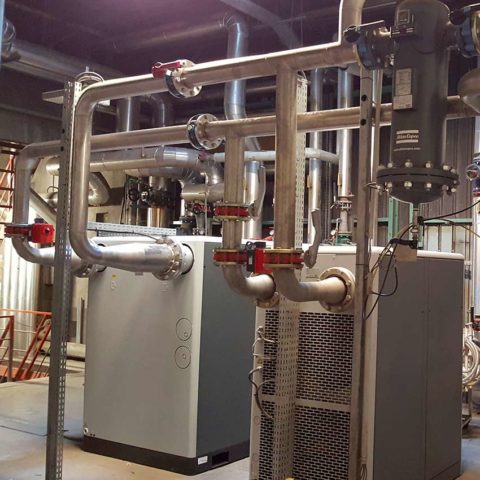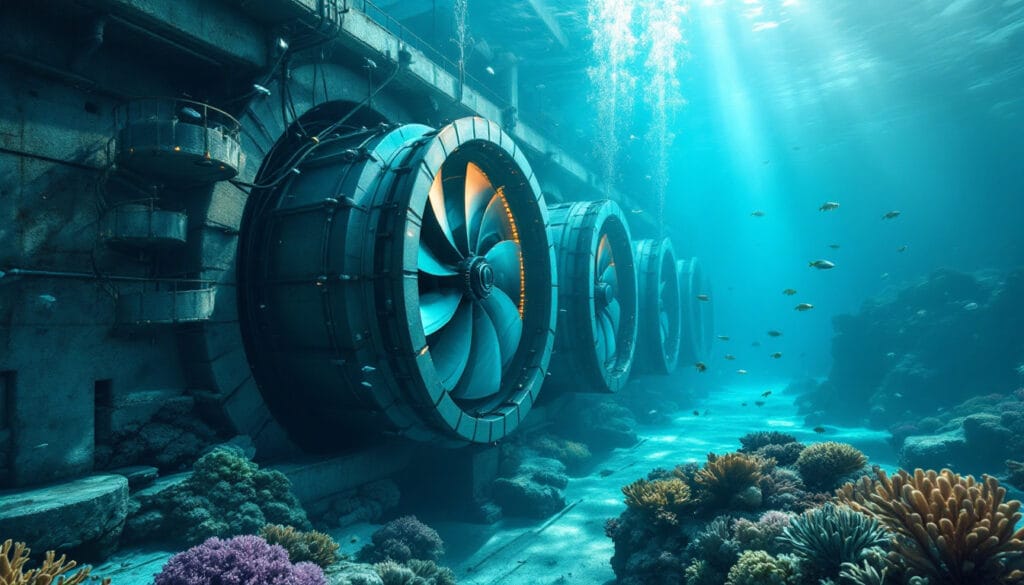Fundamental Principles of Compressed Air Storage
Compressed air storage is a technology used to store energy in the form of compressed air in tanks, underground caverns, or other containers. This process allows for efficient energy consumption management by storing it when produced in excess and releasing it when there is an increased demand.
One of the major advantages of this technology is that it can be integrated into renewable energy production systems such as wind and solar farms. These systems can generate electricity intermittently, and compressed air storage helps smooth out production to meet constant energy needs.
The basic principle of compressed air storage is based on the compression of air when there is a surplus of energy. This air is then stored in tanks. When energy is needed, the compressed air is released and passes through a turbine to generate electricity. This process is particularly effective for self-energy consumption and can be a viable solution for reducing ecological footprints.
- Air compression: Using excess energy to compress air.
- Compressed air storage: Compressed air is kept in specific tanks.
- Release and use: When there is energy demand, the air is released to generate electricity.
Using compressed air storage systems can also be beneficial for companies focused on renewable energy valorization and reducing grey energy. Indeed, this method captures surplus energy and reuses it later, reducing losses and improving the overall efficiency of the energy system.
How Compressed Air Storage Systems Work
Compressed air storage is an essential technique for ensuring efficient energy management and a continuous supply of compressed air in various industrial applications. This method allows for the storage of high-pressure air in specific containers for later use.
The fundamental principles of compressed air storage are based on two major concepts: energy accumulation and energy restitution. The process begins with the compression of air using a compressor. The compressed air is then stored in tanks. These tanks can vary in size and capacity depending on application needs.
The operation of compressed air storage systems involves several essential components:
- A compressor to compress the air.
- Storage tanks to hold the compressed air.
- A regulation circuit to maintain adequate pressure and distribution.
- Safety valves to prevent overpressure.
Each component plays a crucial role in maintaining the efficiency and safety of the system. The tanks must be robust enough to withstand high pressures and are often made of steel or aluminum.
The primary advantage of compressed air storage is the ability to provide a steady source of energy even during peak demand periods or when the compressor is offline. This leads to better energy efficiency and reduced operational costs.
Common Applications of Compressed Air
Compressed air storage is a method used to accumulate energy by compressing air, which can then be released to produce electricity or for other industrial uses. This system offers several advantages, including great flexibility and long-term storage capacity.
The basic principles of compressed air storage rely on several essential steps. First, air is compressed using a compressor and stored in high-pressure tanks, often underground in caverns or aquifers. When energy is needed, the compressed air is released, driving a turbine or generator to produce electricity.
Compressed air storage installations must be equipped with several main components:
- A compressor to compress the air.
- Robust storage tanks to maintain the air under pressure.
- Turbines or generators to convert the energy from compressed air into electricity.
- A thermal management system to handle the heat produced during compression and decompression.
The applications of compressed air are varied and found in many sectors. In industry, compressed air is essential for the operation of pneumatic tools, transporting materials, and carrying out control and automation processes.
In the energy sector, compressed air storage is used to balance electricity supply during peak demand periods and to support the integration of renewable energies by compensating for their intermittency. It can also be used in transportation systems, particularly for driving compressed air vehicles that offer an eco-friendly transport option.
Articles similaires
Thank you!
We will contact you soon.













